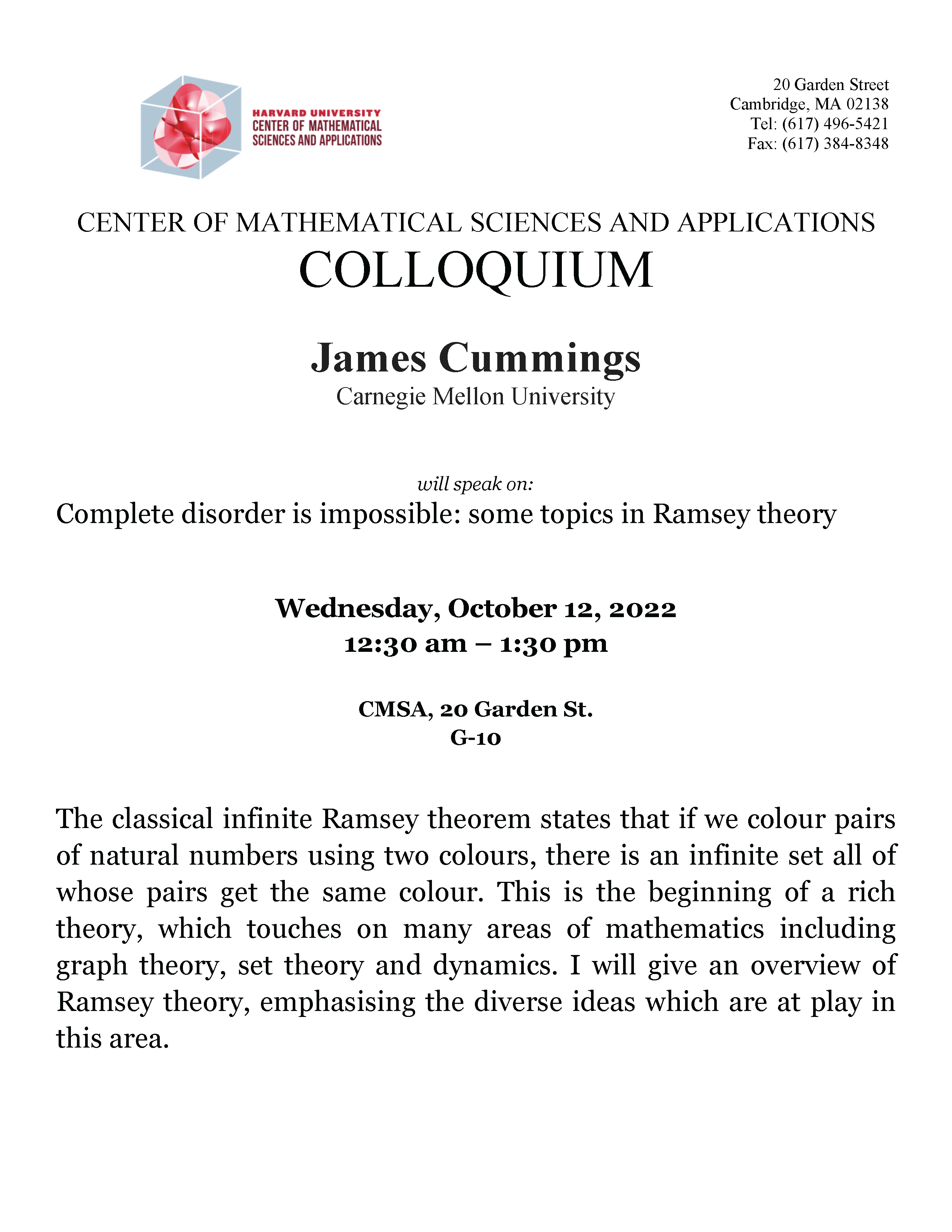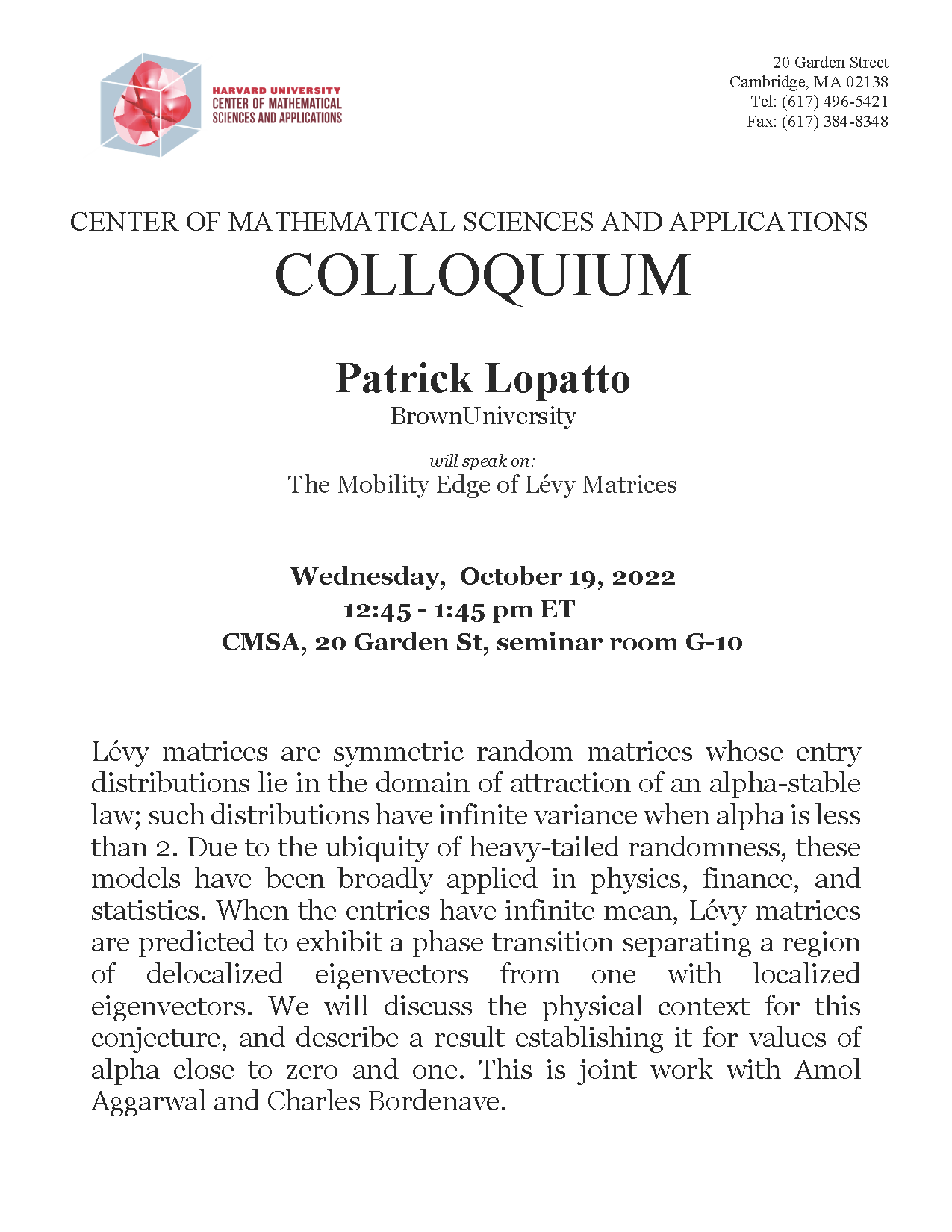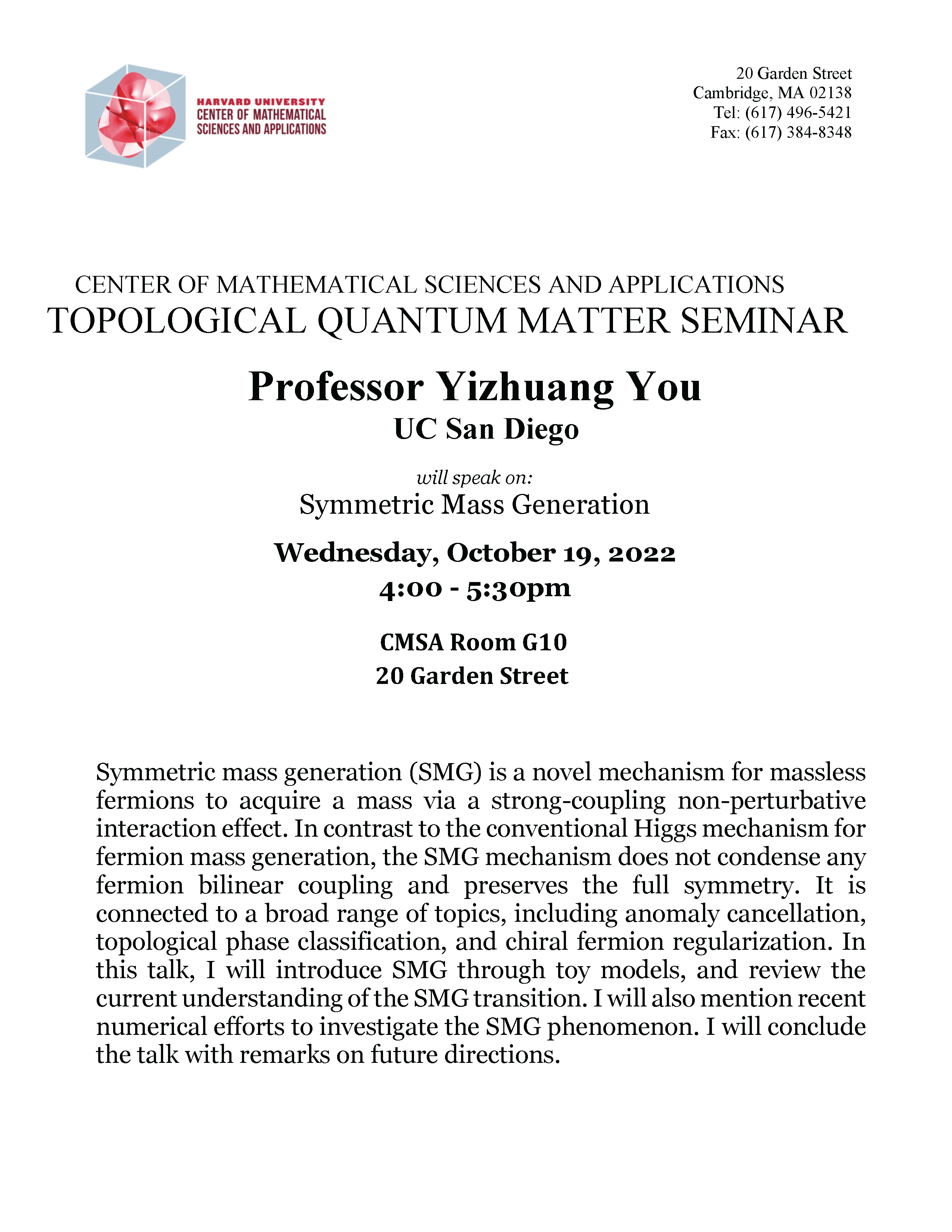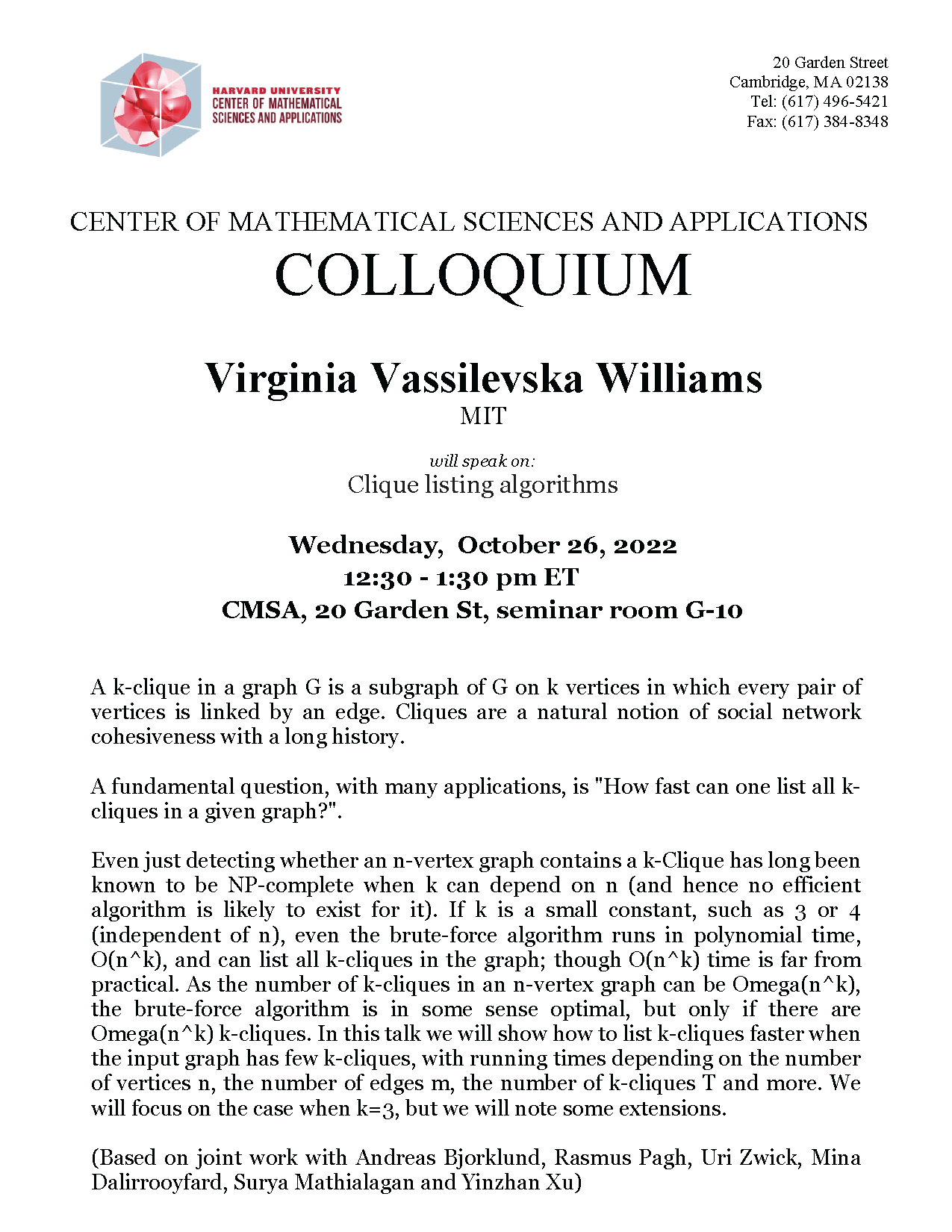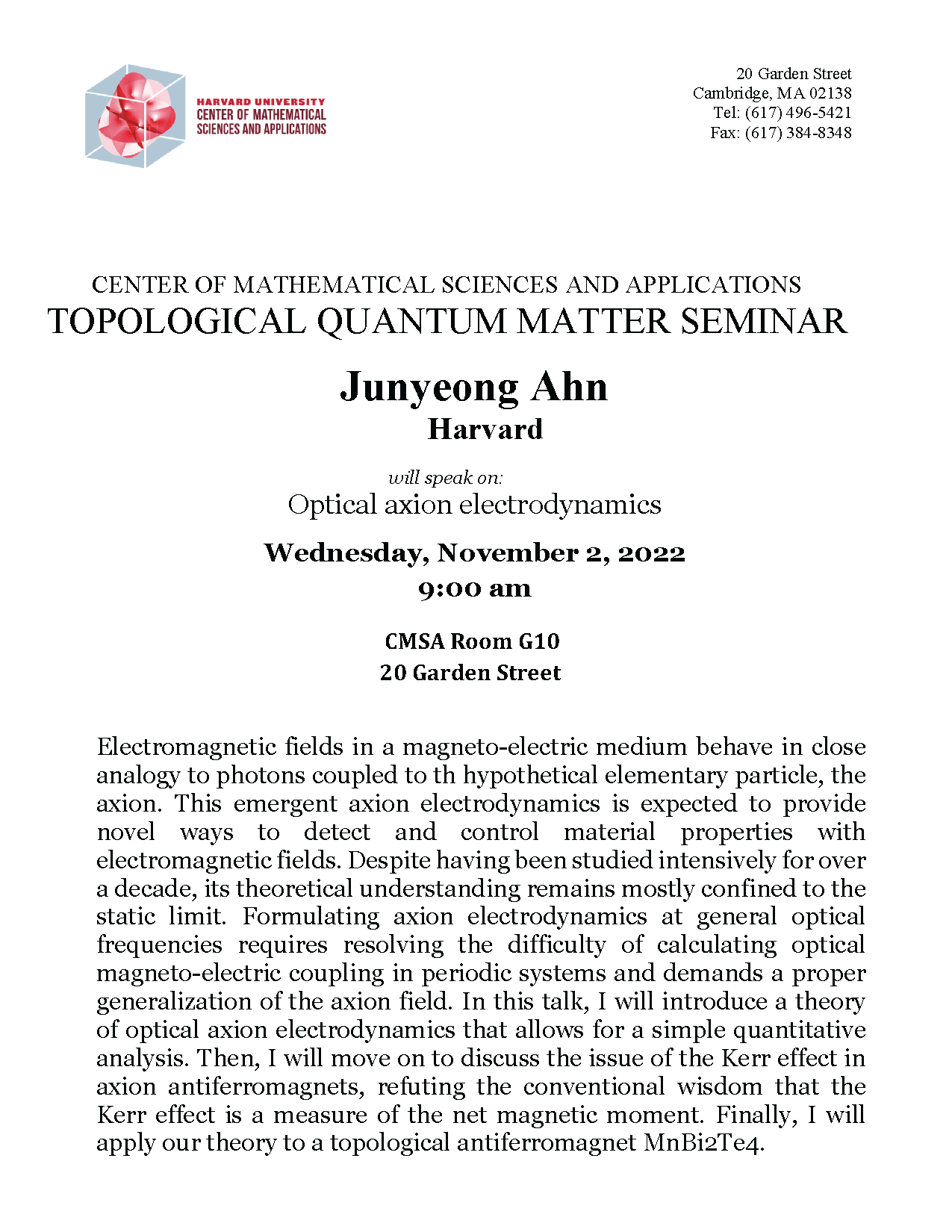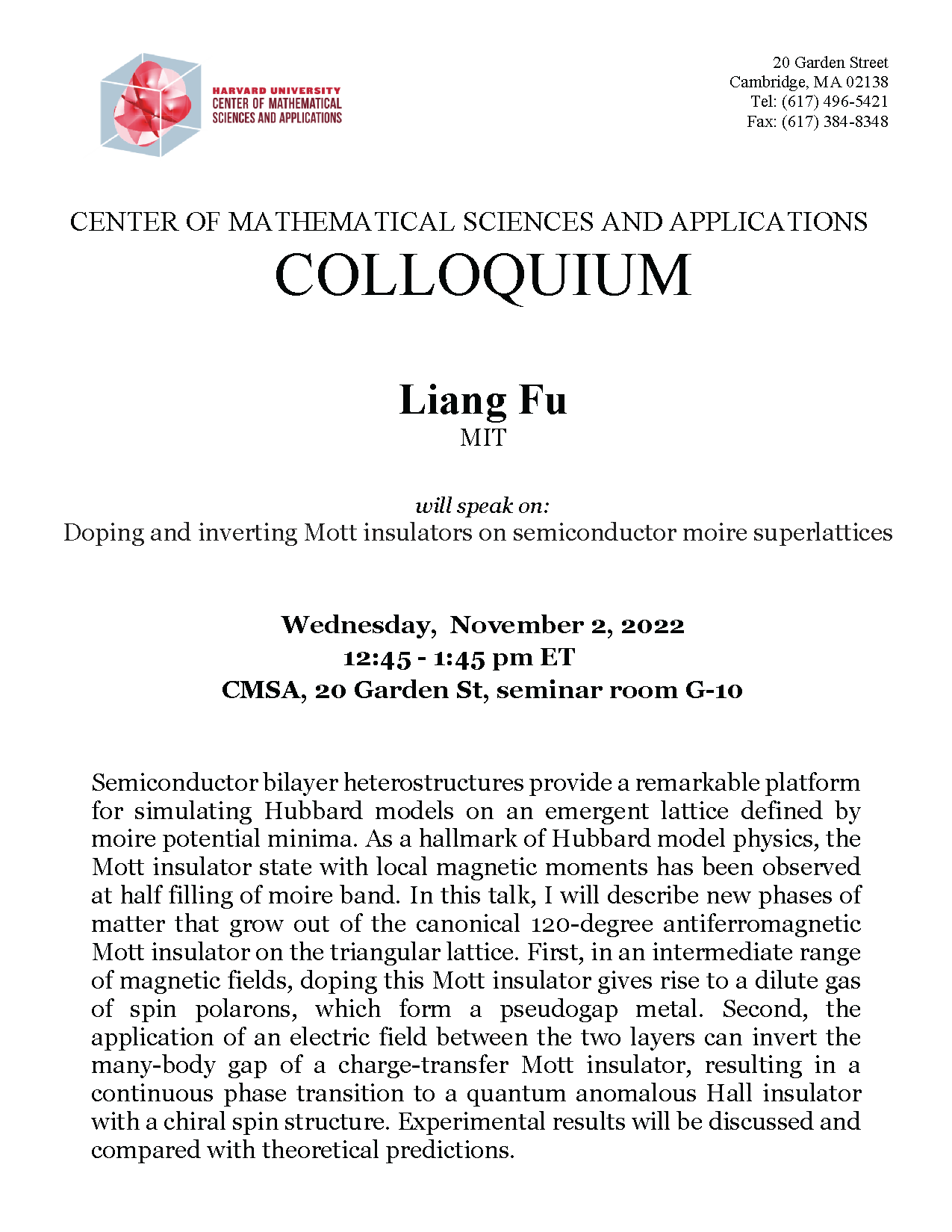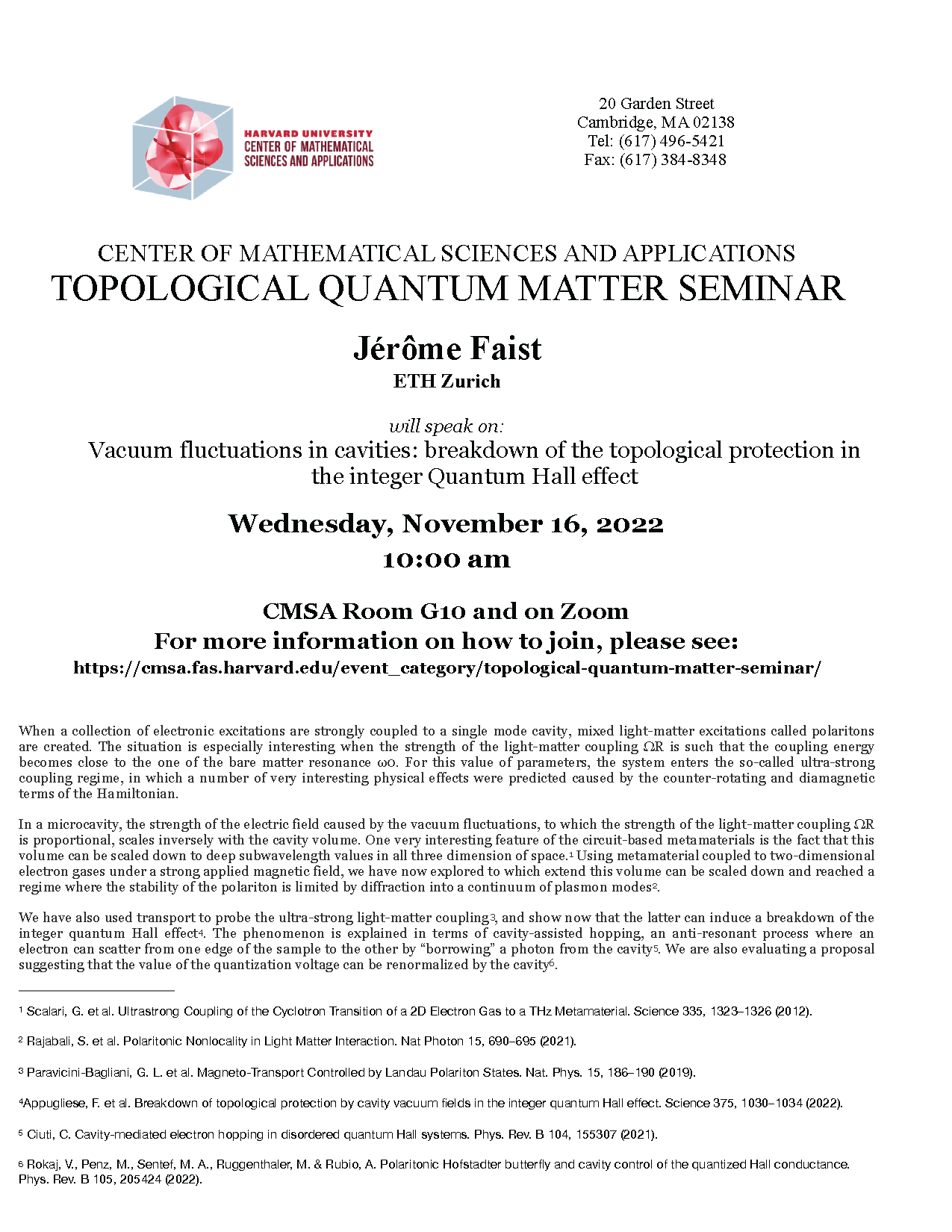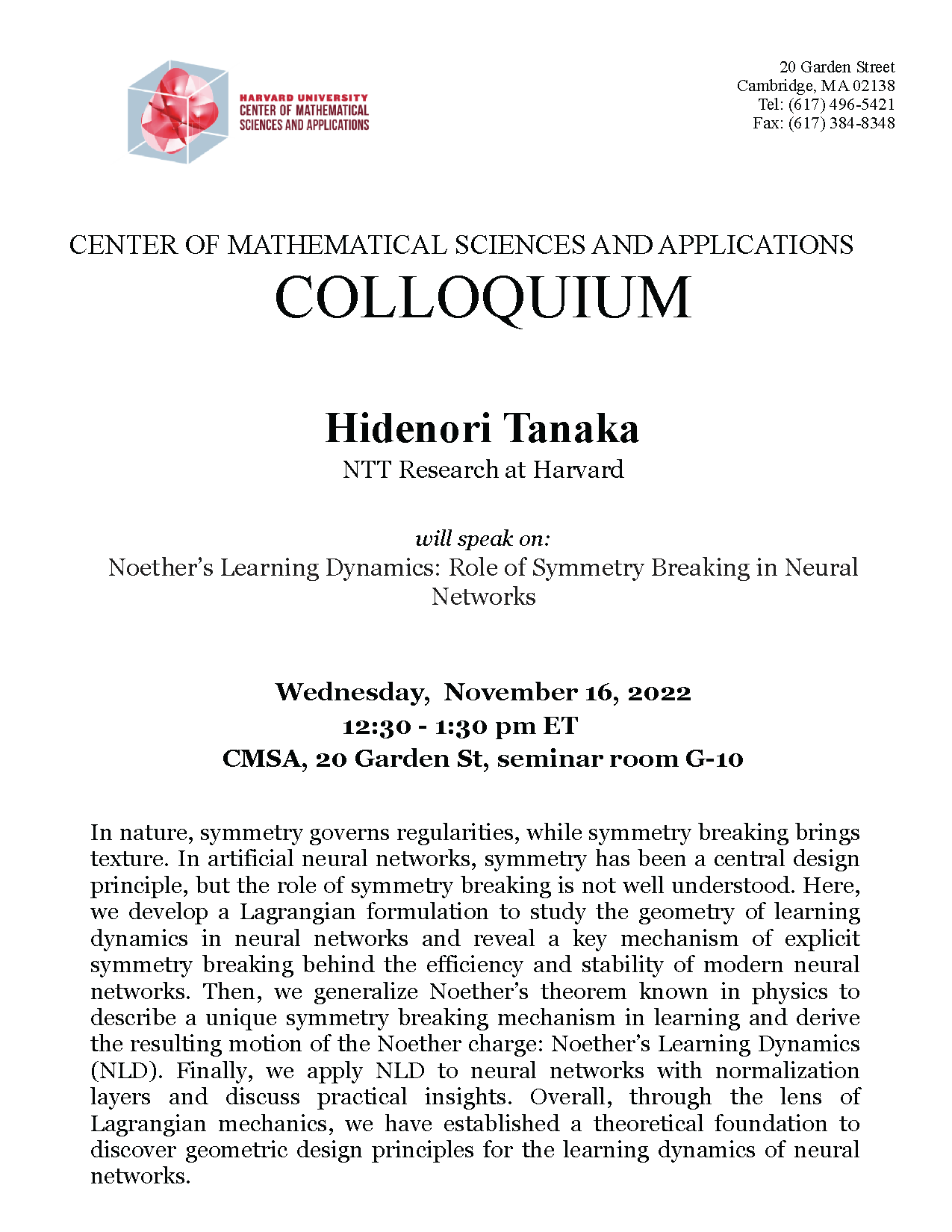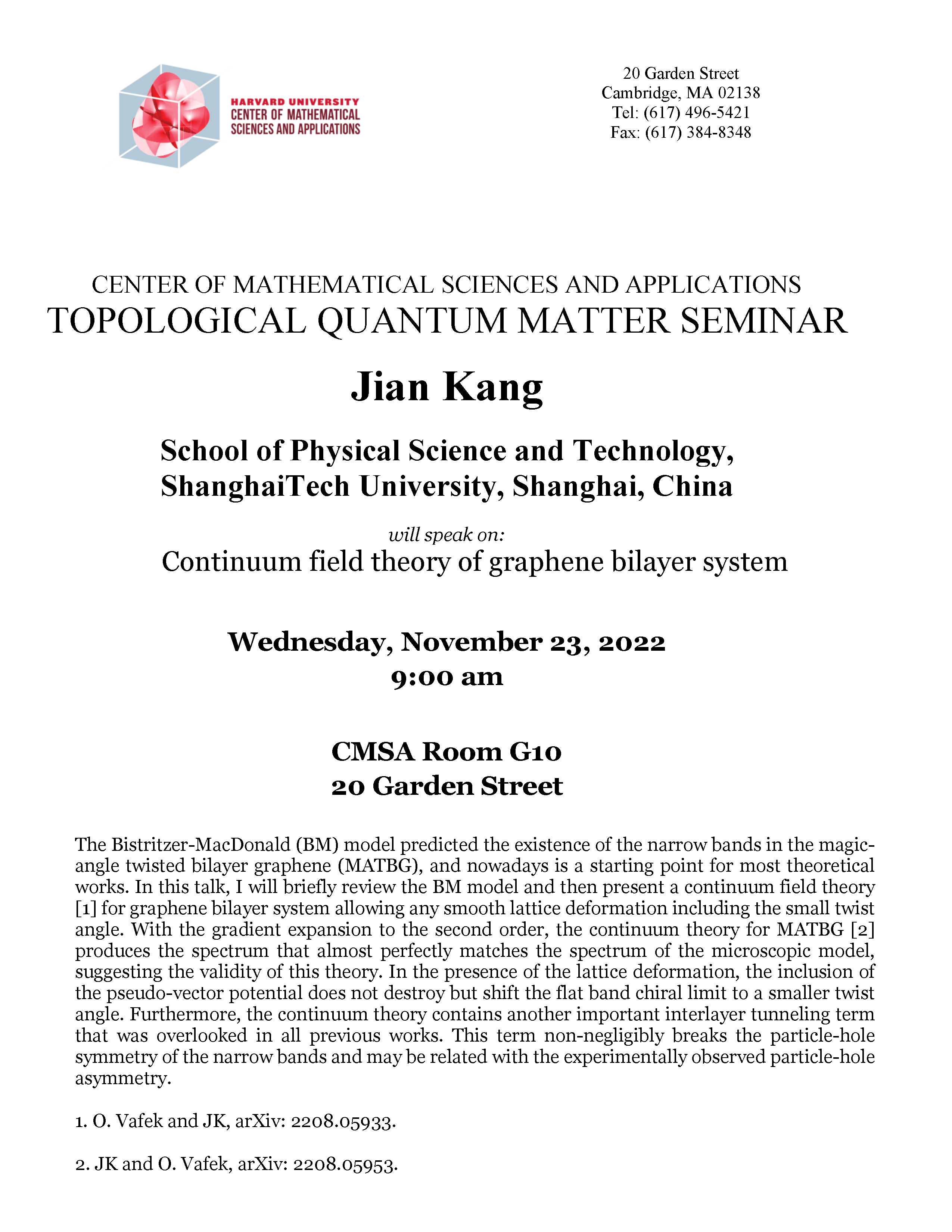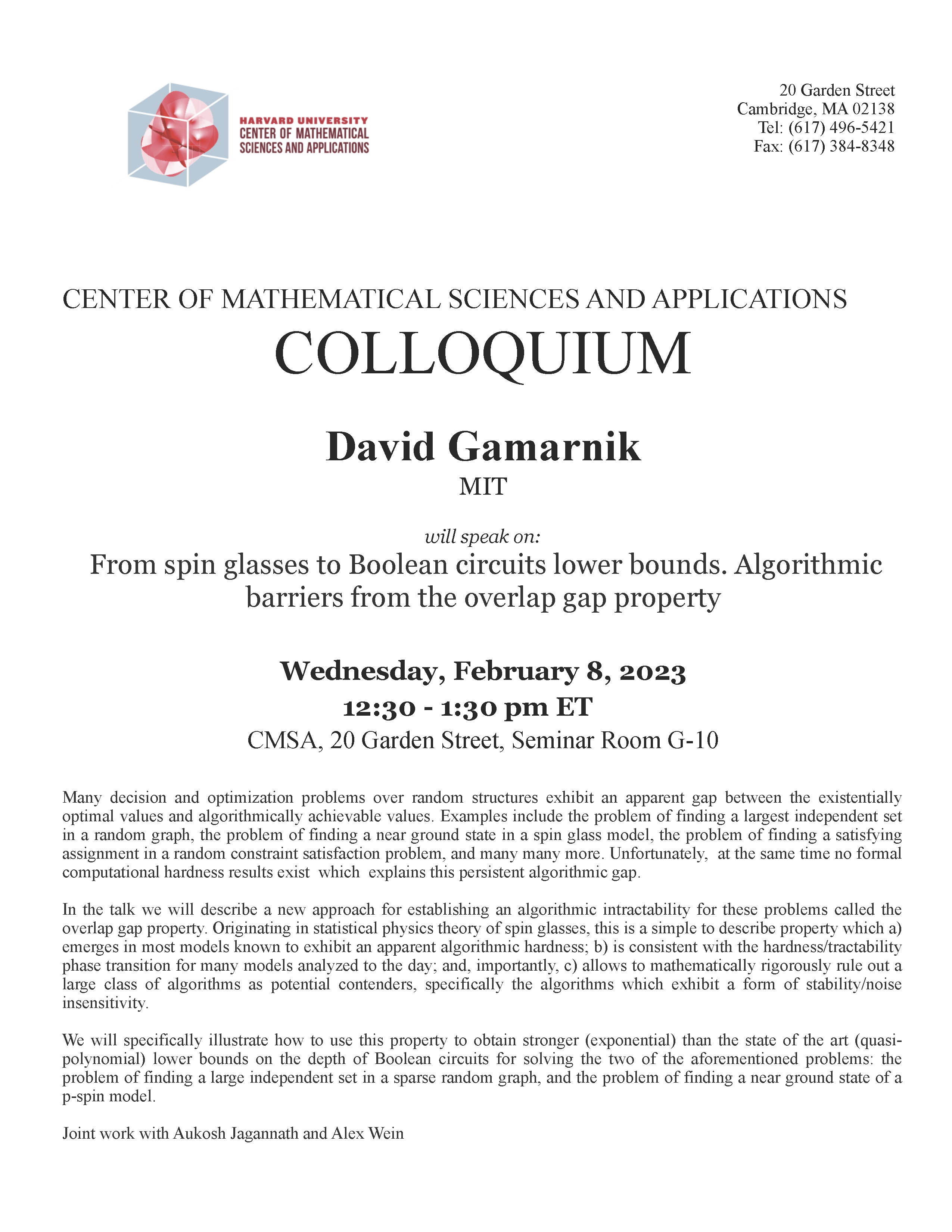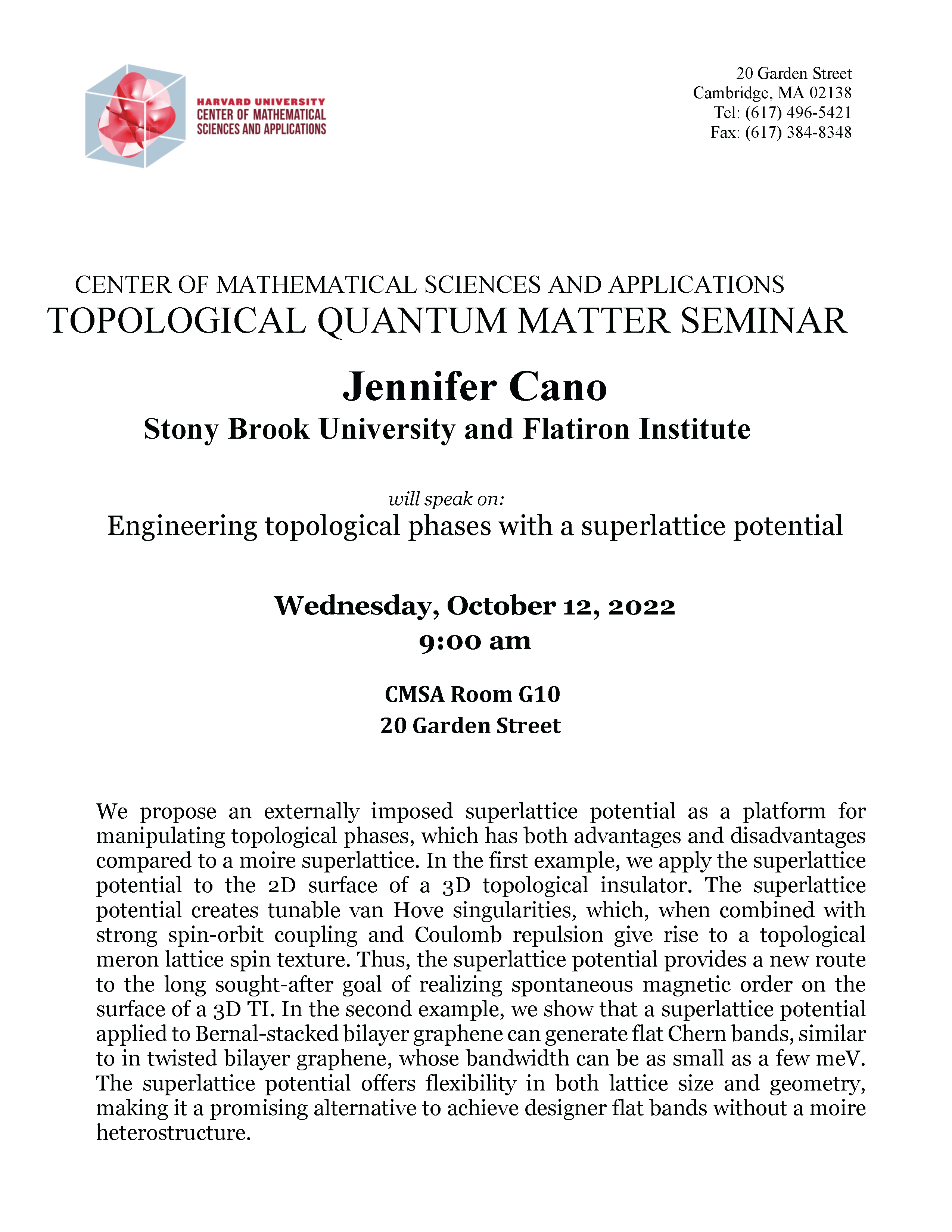
Engineering topological phases with a superlattice potential
CMSA Room G10 CMSA, 20 Garden Street, Cambridge, MA, United Stateshttps://youtu.be/NbjuY80nWgM Topological Quantum Matter Seminar Speaker: Jennifer Cano (Stony Brook and Flatiron Institute) Title: Engineering topological phases with a superlattice potential Abstract: We propose an externally imposed superlattice potential as a platform for manipulating topological phases, which has both advantages and disadvantages compared to a moire superlattice. In the first example, we apply the superlattice […]

